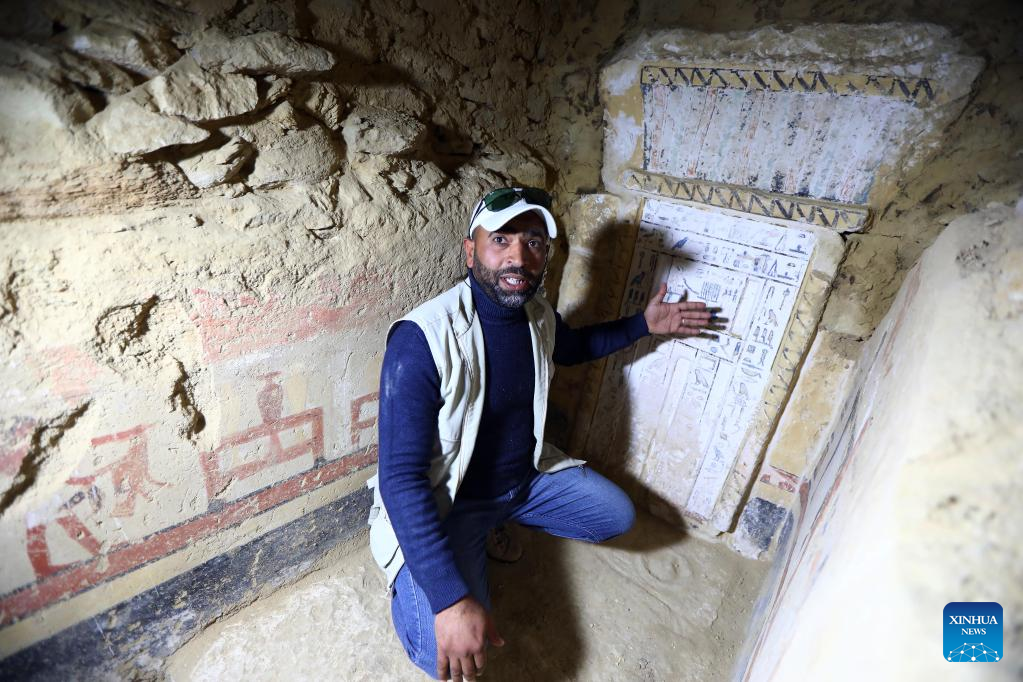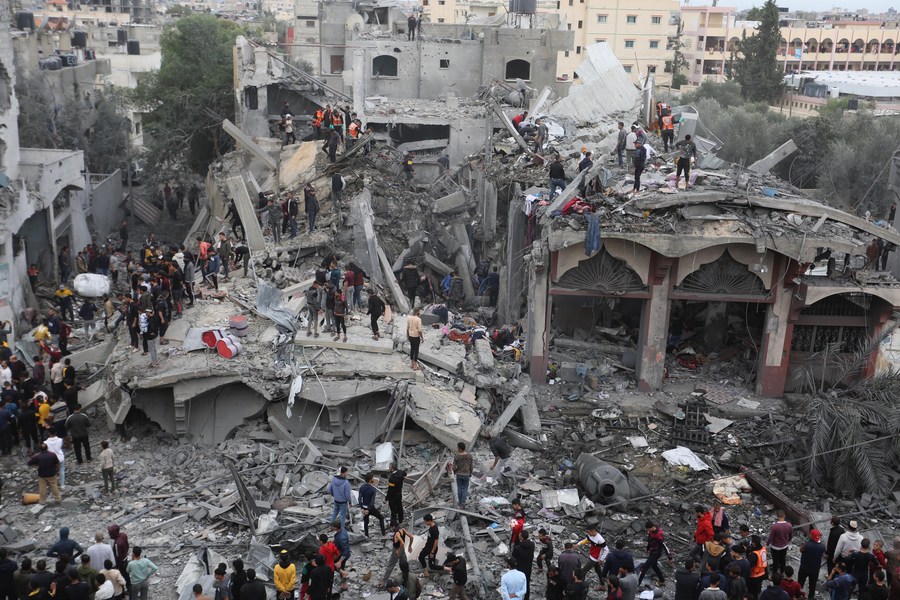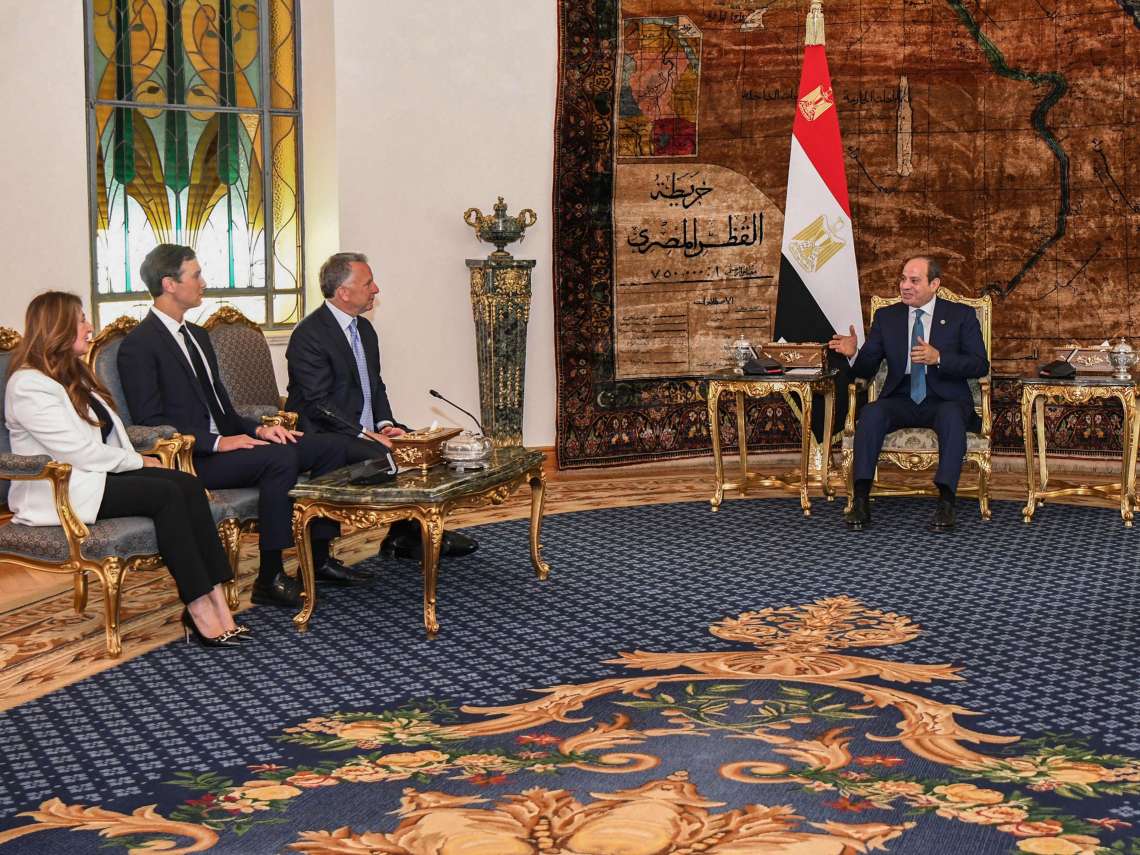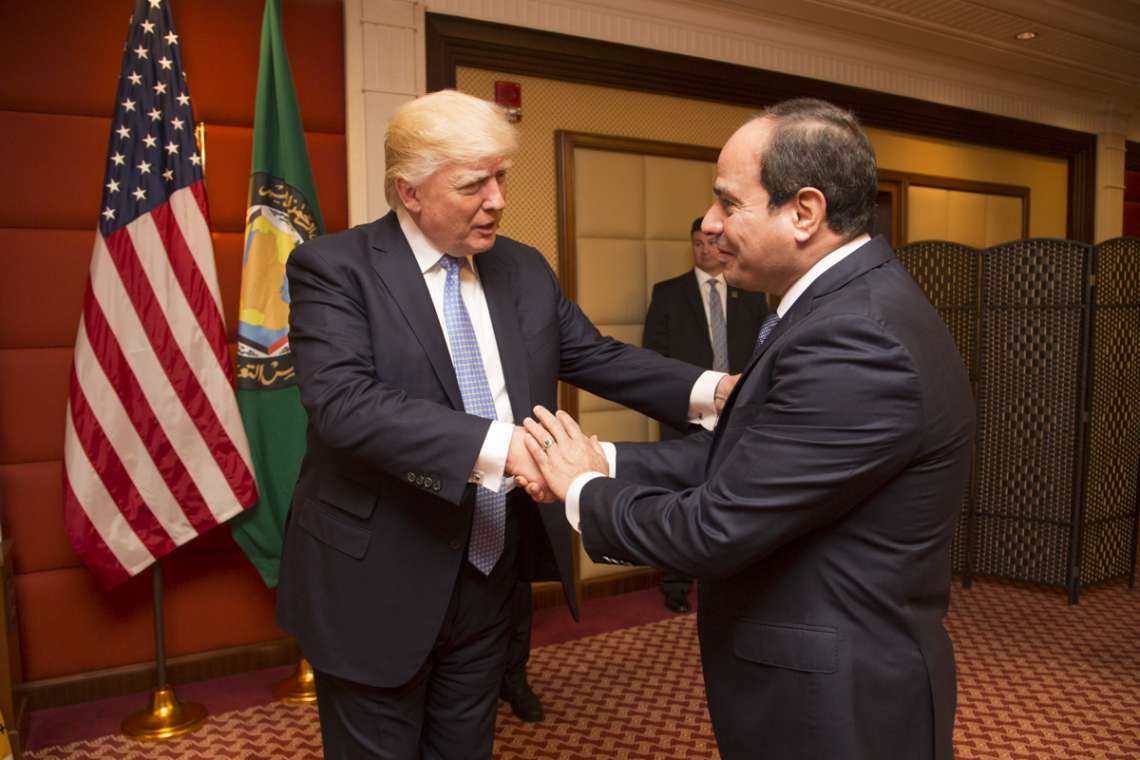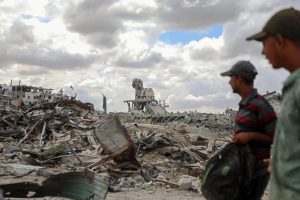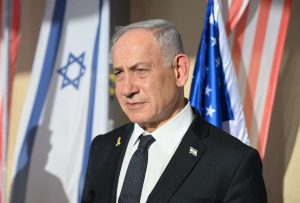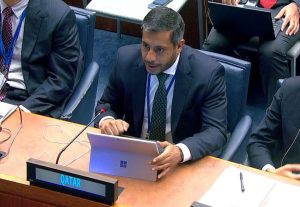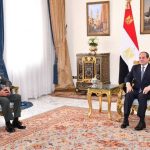A carved stone unearthed from newly-discovered ancient tomb in Saqqara necropolis, south of Cairo, Egypt. Egypt’s renowned archeologist Zahi Hawass announced the discovery of “important tombs hosting a 4300-year-old mummy” in Saqqara necropolis near the Pyramids of Giza (Picture Credits: Ahmed Gomaa)
Egypt’s renowned archeologist Zahi Hawass announced the discovery of “important tombs hosting a 4300-year-old mummy” in Saqqara necropolis near the Pyramids of Giza.
“The mummy is the oldest and most complete unroyal mummy found in Egypt to date,” Hawass said in a press conference.
The mummy of a man, Hekashepes, covered with gold leaf, was found inside a large rectangular limestone sarcophagus in a room located under a 15-meter-deep shaft, the Egyptologist said.
He added that many stone vessels were seen around the sarcophagus, which was completely sealed when the mission discovered it.
“The oldest mummy is part of the important discovery of a group of tombs that date back to the fifth and sixth dynasties of the Old Kingdom,” said Hawass, the director of the Egyptian excavation team working with the Supreme Council of Antiquities at Gisr el-Mudir area in Saqqara.
He explained that new discoveries indicated that the site comprises a large cemetery.
According to Hawass, a tomb that belonged to Khnumdjedef, an inspector of the officials, a supervisor of the nobles, and a priest in the pyramid complex of Unas, the last king of the fifth dynasty, is the most important one among the new discoveries.
Khnumdjedef’s tomb is decorated with inscriptions of daily life.
The second largest tomb belonged to Meri, who was a keeper of the secrets and assistant of the great leader of the palace.


The mission also found a third tomb for Messi, who is a priest of King Pepi I Meryre, the third king of the Sixth Dynasty of Egypt, and nine beautiful statues, which include one for the priest and his wife, several servant statues, and statues representing individuals.
Hawass added that the mission uncovered another 10-meter-deep shaft comprising a set of beautiful wooden statues, three stone statues representing a person named Fetek, an offering table, and a stone sarcophagus that contained his mummy.
The Egyptian mission also found many amulets, stone vessels, tools for daily life, and statues of the funerary deity Ptah-Sokar at the site, he added.

